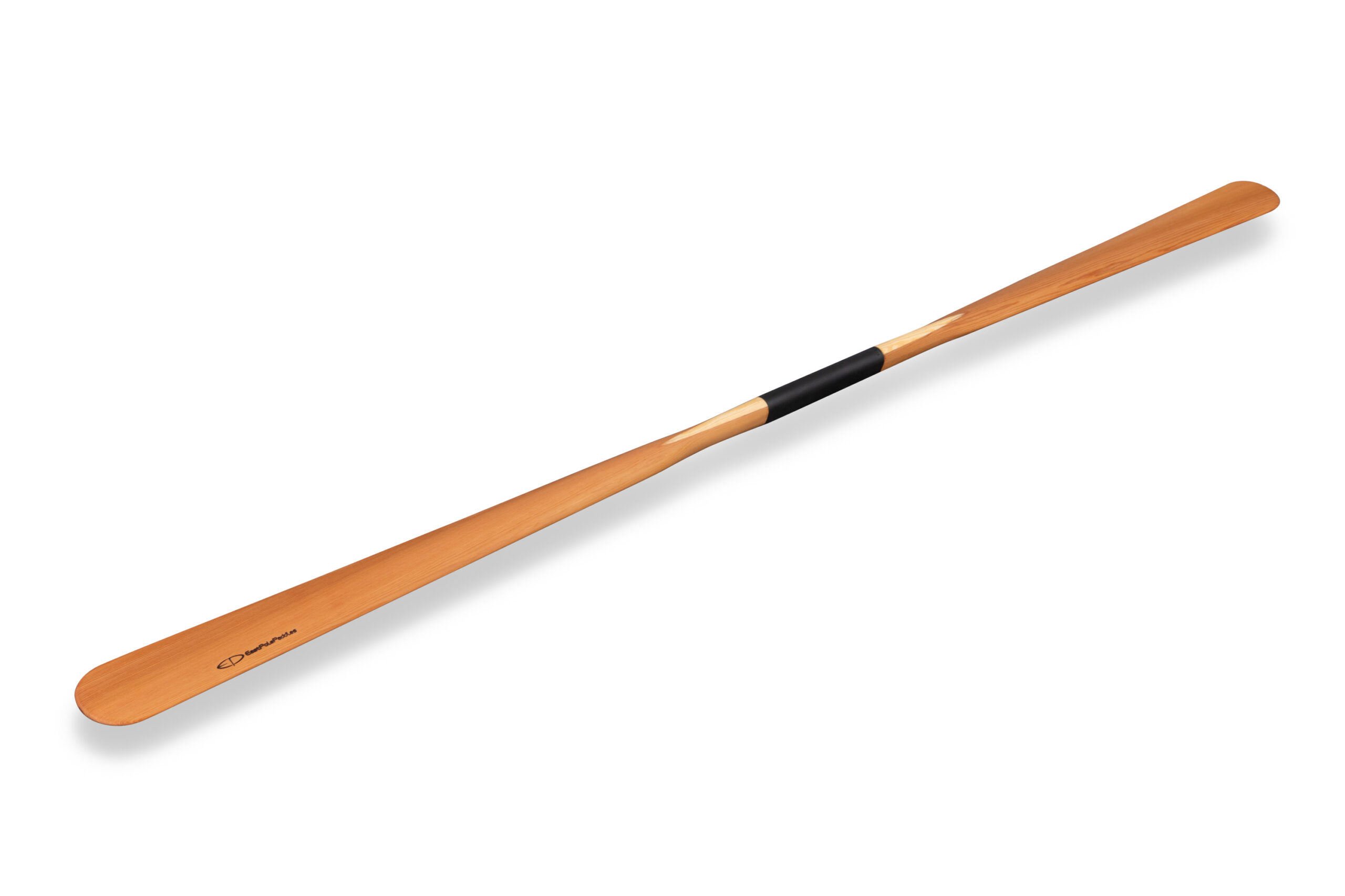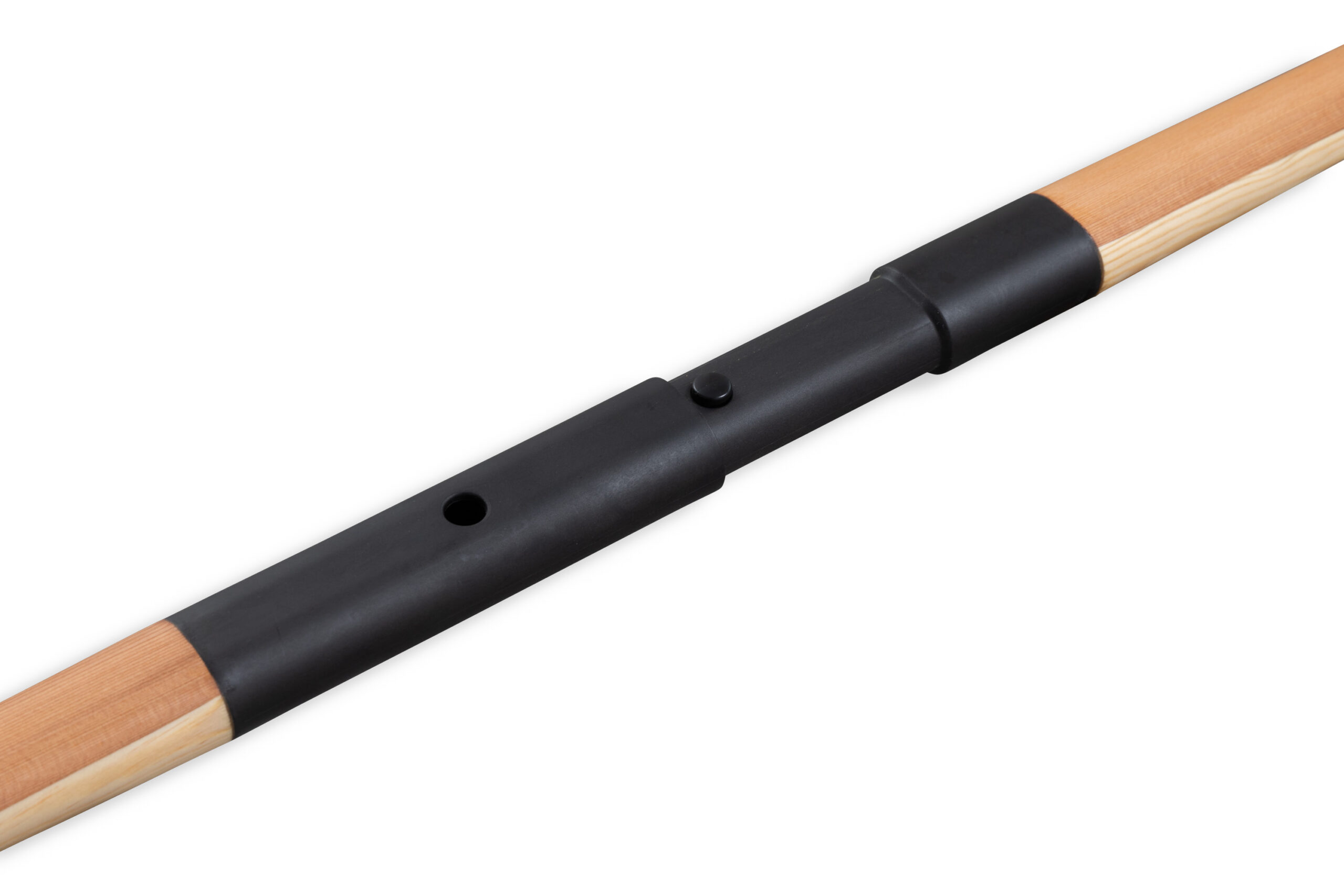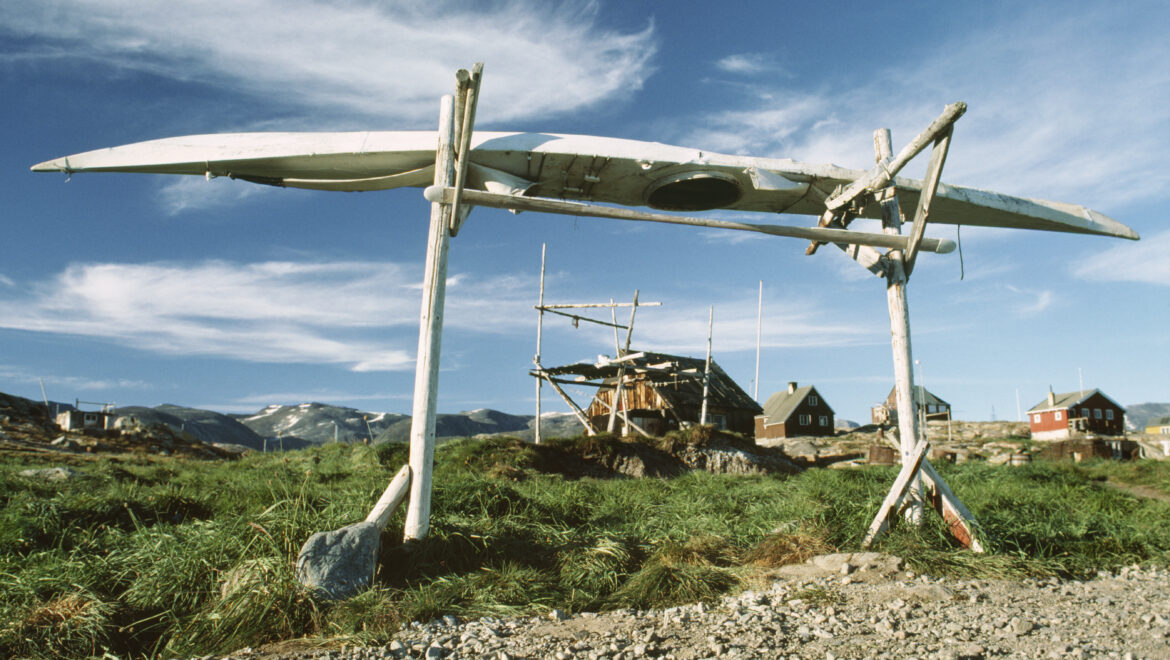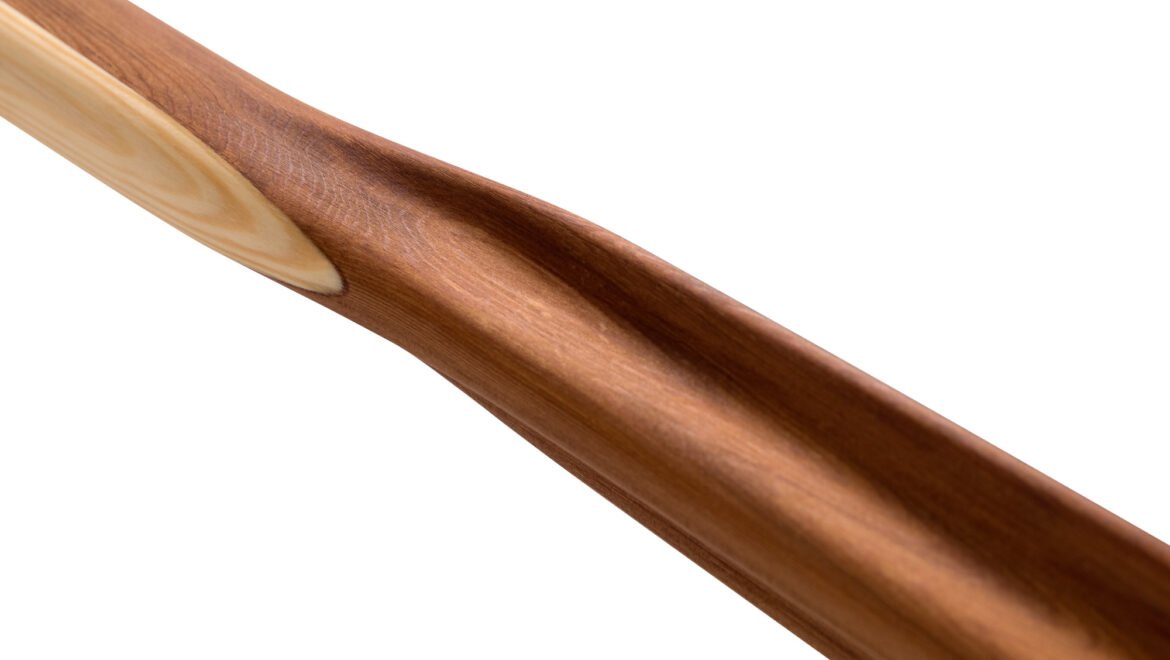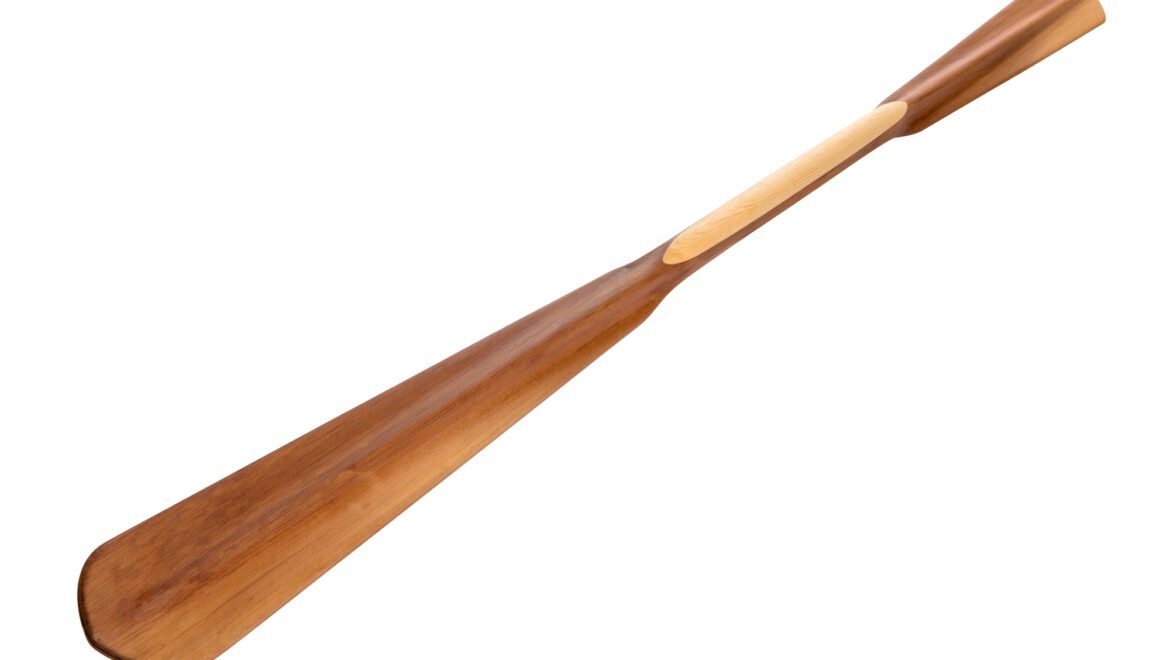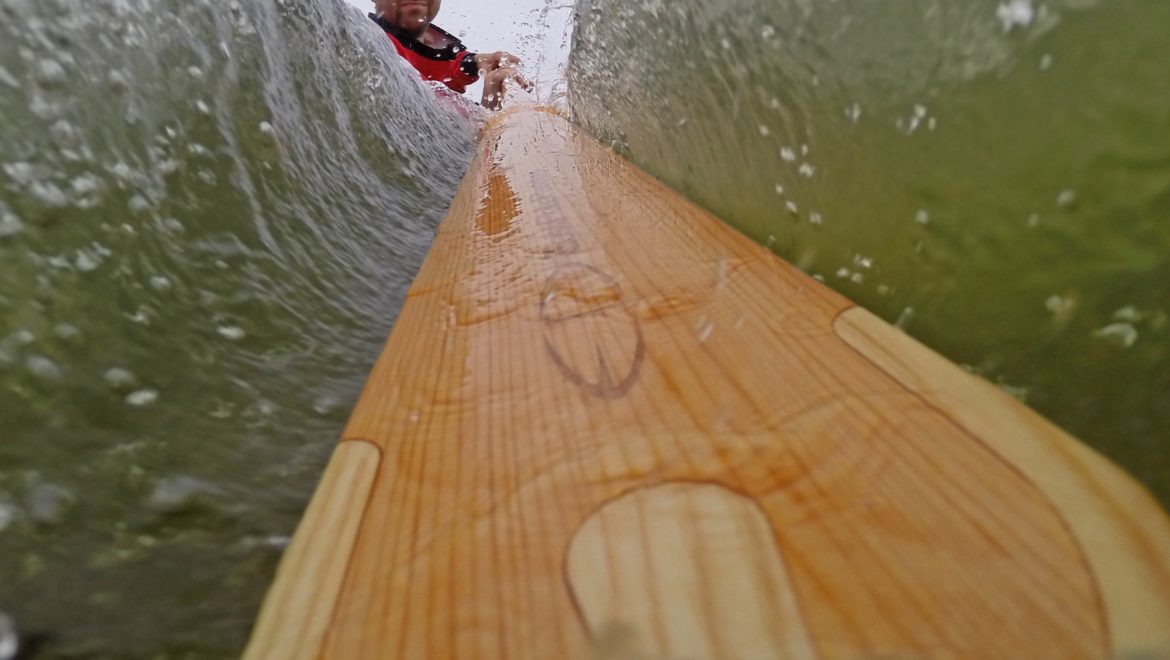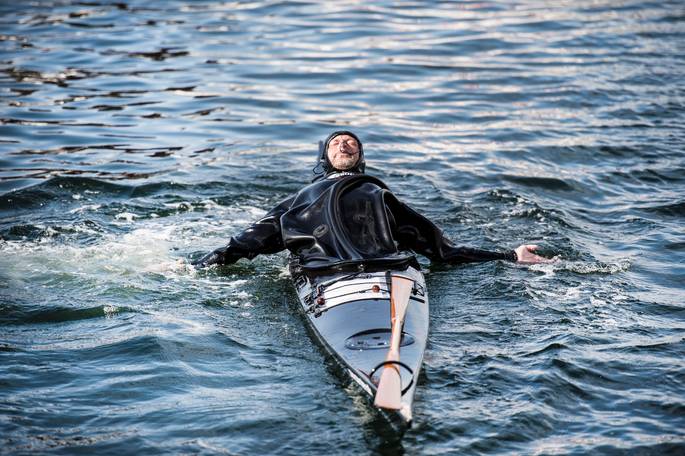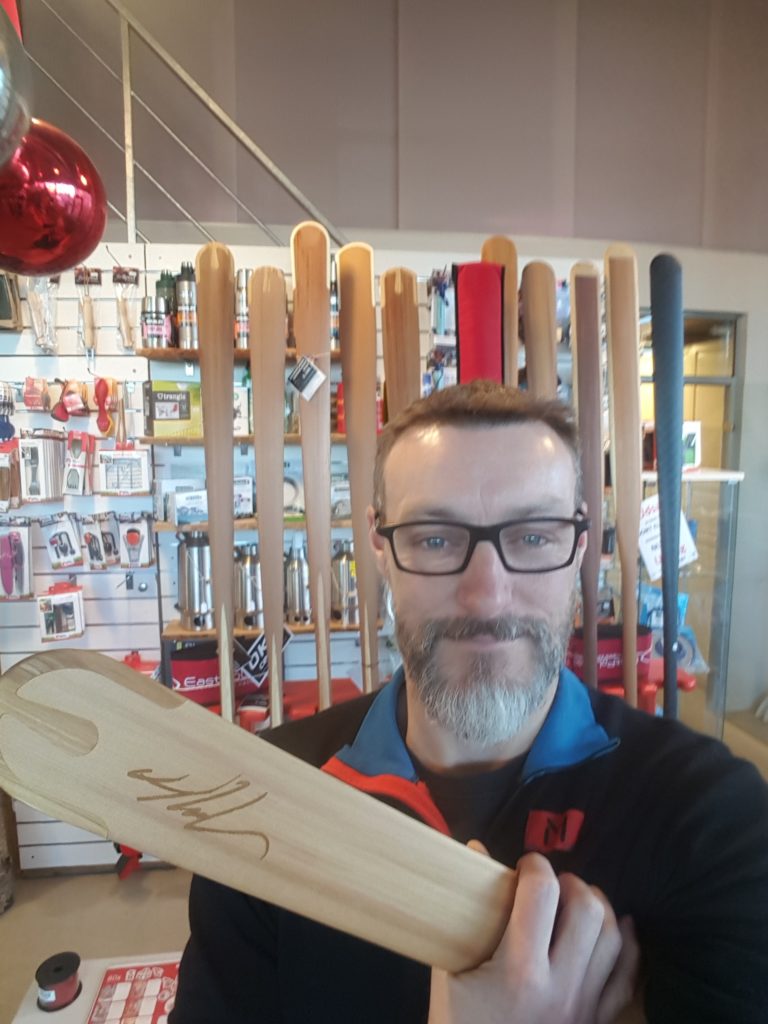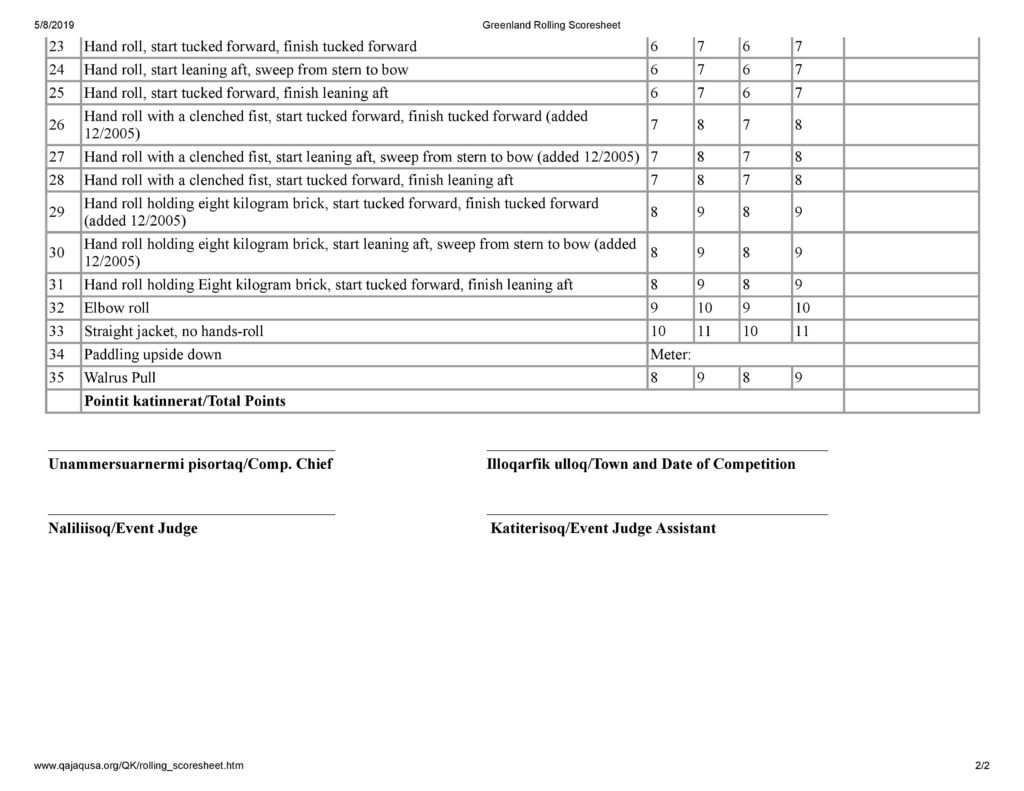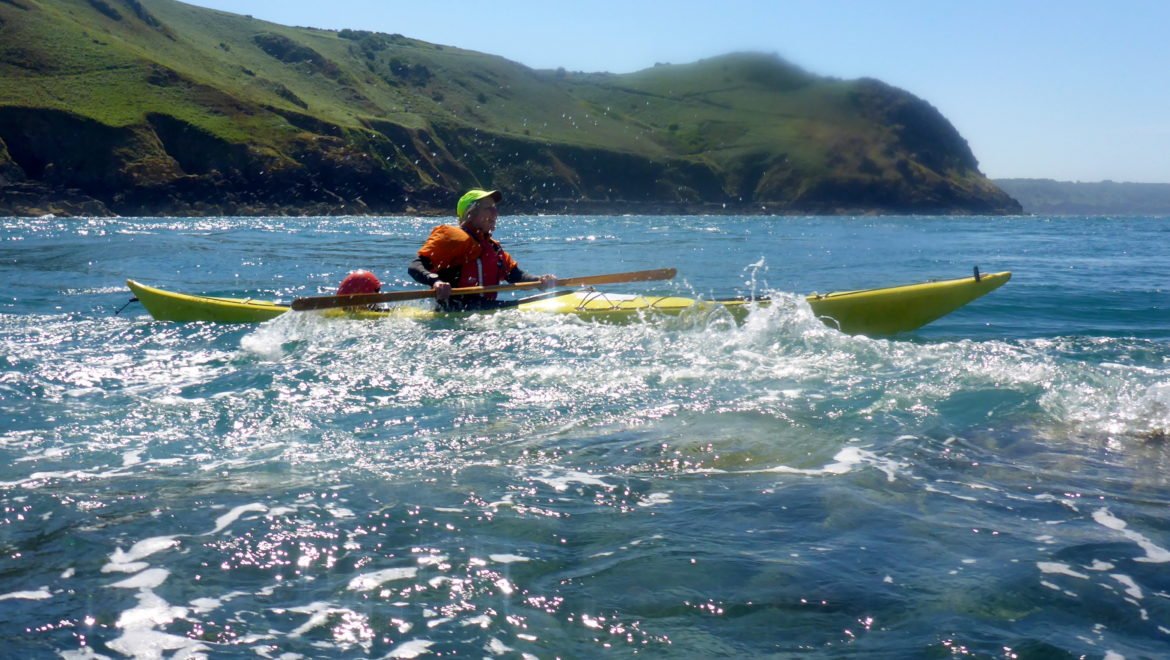Sea kayaking with Greenland paddles in Jersey, THE ISLAND OF THE TIDES
Text and photos: Derek Hairon, British Canoeing Level 5 Sea Kayak Coach, Director of Jersey Kayak Adventures
www. jerseykayakadventures.co.uk
info@jerseykayakadventures.co.uk
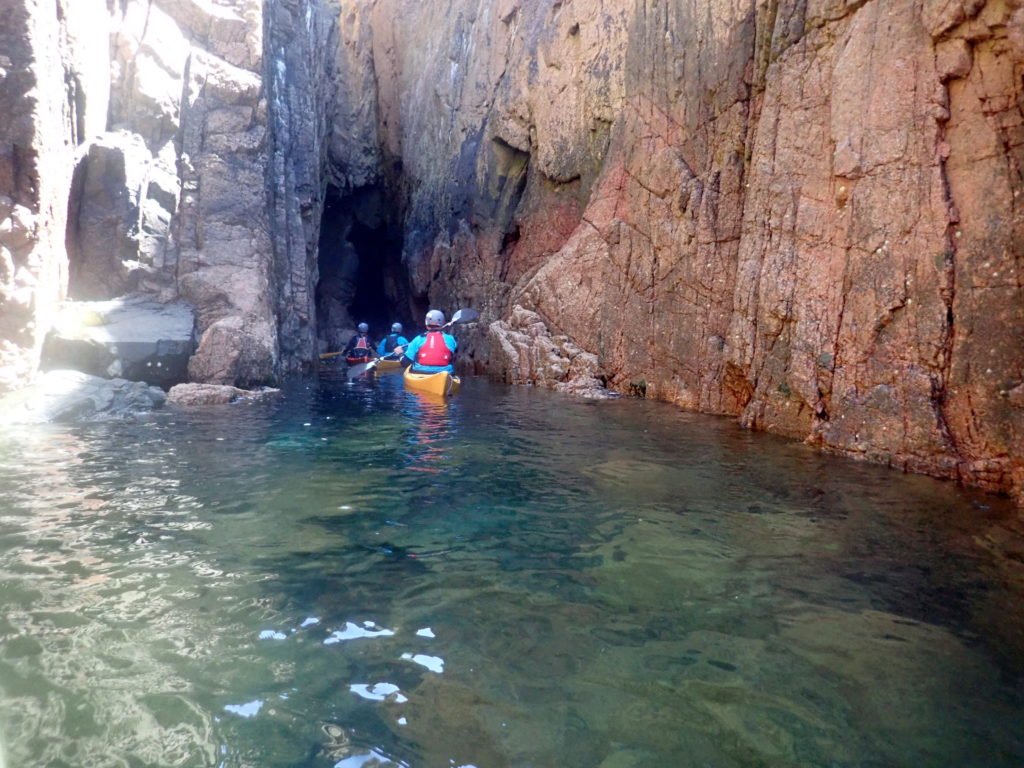
Sea kayaking in caves of Jersey
Jersey, the island of the tides, is a remarkable sea kayaking destination. Don’t confuse ‘old’ Jersey with it’s American namesake New Jersey. The island lies in the western part of the English Channel. It’s not part of England and has it’s own government or, as the islanders like to point out, it’s not quite British!
Though it appears to be only a small island sea kayakers quickly discover there is an enormous range of sea kayaking experiences around the coastline. From high cliffs, deep caves and rock gardens to gentle coastal trips through the largest rocky intertidal area in Europe. Mess up your tide times and a gentle paddle can become a 2km walk as you drag your kayak across what some people call a lunar-like landscape. For those paddlers who prefer to push their limits Jersey has tides of up to 12m, tide races off a few headlands and some excellent overfalls. Plus, a top-class west-facing surf beach where the next bit of land is Newfoundland across the Atlantic. There is even a few offshore paddles to Les Écréhous, Sark, Paternosters and Les Minquiers.
Jersey has a well-developed economy with good air and sea links, lots of hotels and restaurants, so any visit can be more than just a sea kayak trip.
Why do you have a range of kayaks and paddles?
When you run a sea kayak centre, our clients like the opportunity to use and thoroughly test kayaks and kit in a wide range of conditions.
I often meet sea kayakers who when asked about their reason for selecting a particular design of paddle give one of thee answers:
- it was a special price
- they’d read some good reviews
- a friend had the same model, and they used it for a short time
- the paddle was the same as the one they used on their first course
- everyone in their club uses the same design.
All these approaches ignore that we are all different, just as the type of paddling we undertake varies. The paddle that may be great for one person may be inappropriate for another. Much depends on the way you paddle and your own needs. A few minutes testing a paddle on just one type of water or, ages spent trawling the internet for paddle reviews does not replace the need to get out paddling and then decide what paddle is best for you. Often, there may be a trade-off, but at least you will be able to explain with some clarity your reasons for selecting a specific paddle with a higher level of understanding. Furthermore, you need time and the chance to paddle in a range of conditions to decide what paddle design is best for you.
If you paddle with Jersey Kayak Adventures, you’ll find we have everything from Euro to Wing and Greenland style paddles in a range of lengths and blade areas. On a multi-day course or kayak trail, this means you get the chance to try a paddle for a reasonable time and to compare and contrast the merits of each design. Plus, when it’s not the shop or a friends paddle, you can really put the paddle under a bit of pressure in a range of conditions. One nice thing with the Greenland paddles is that they can take some rough handling, especially in rock gardens. We can even supply kayaks and paddle kit so you can fly to Jersey (fights from most UK national and many European airports) instead of spending many hours on the motorways of the UK and Europe.
For those who want to really understand and improve their forward paddling technique, we also offer coaching. You can even tune-up your skills using our “slider” paddle machine. The “slider” is designed by former world champion paddler Ivan Lawler who knows his stuff about good forward paddling technique. Many paddlers are surprised at just how much propulsive power is transferred from the lower body and feet. Or, as we like to say “kayaking is a leg sport, not an arm sport!”
There is, of course, many different manufacturers of Greenland paddle. I was drawn to selecting from the range of EastPole paddles a a result of the feel, care and strength of the design at an affordable price. It is therefore great to see people experimenting with a variety of designs in various sea conditions as they develop their understanding of the elegance of sea kayaking and paddle technique.
Whatever you do, don’t just follow the herd and use a particular brand or design of paddle. Experiment and explore what suits your own style of paddling. And, ensure you get some coaching, so you develop an excellent forward paddle technique!

